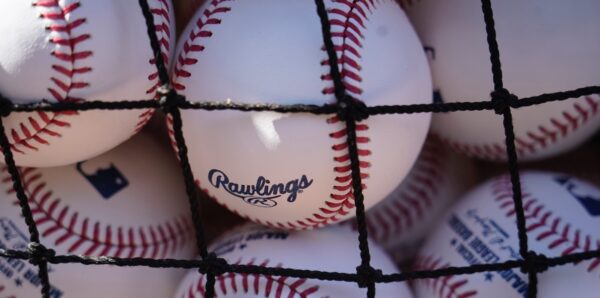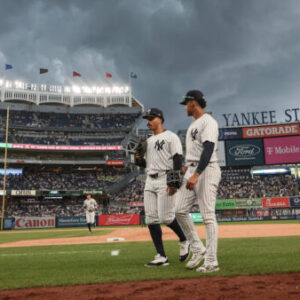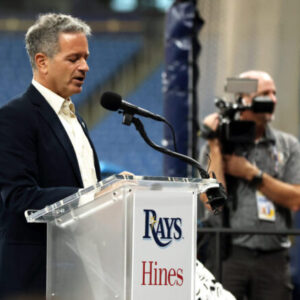Per a Mark Feinsand report, Nick Martinez will be the only outgoing free agent who accepts the Qualifying Offer by today’s deadline. That means every other free agent who got the offer from his former team has rejected it, and now hits free agency attached to draft pick compensation:SS Willy Adames, Brewers1B Pete Alonso, Mets3B Alex Bregman, AstrosRHP Corbin Burnes, OriolesLHP Max Fried, BravesOF Teoscar Hernández, DodgersLHP Sean Manaea, MetsRHP Nick Pivetta, Red SoxOF Anthony Santander, OriolesRHP Luis Severino, MetsOF Juan Soto, Yankees1B Christian Walker, DiamondbacksKeep this in mind as you think through what you want the offseason to look like. To me, mid-rotation options like Nick Pivetta, Sean Manaea, and Luis Severino are now profoundly less interesting in free agency, because they would cost the Cubs not only the contract, but also their second round pick next year, their fifth round pick next year, the bonus pool slots associated with those picks, and $1 million in IFA pool space.

It doesn’t mean you categorically do not sign a qualified free agent, but it does mean you associate a dollar amount with what you’re losing, and then do the math on what kind of contract offer makes sense. For those mid-tier guys, the lost value might take the contract offer down so low that it’s not even worth bothering. As for the biggest names, being attached to draft pick compensation will have no meaningful impact on their markets.
The Cubs, at this point in the rumor cycle, aren’t exactly being attached to those types all that frequently. More background on the Qualifying Offer if you’re unfamiliar, and the fallout from today’s decisions … The Qualifying OfferThe Qualifying Offer (QO) is a one-year contract offer, valued at the average of the 125 highest salaries in baseball. Outgoing free agents who (1) were on their team the whole season, and (2) have never received a QO before, are eligible to receive such an offer.
This year, the value is $21. 05 million. Once that offer is made, the free agent can accept the one-year deal and stick with his team.
If he declines the QO, then he remains a free agent, but subject to the two halves of Draft Pick Compensation. Draft Pick CompensationStrictly speaking, only half of the after-effects of a rejected QO involves “compensation. ” The other half is more like a “penalty,” but it seems wrong to say teams are being “penalized” for signing a free agent.
Anyway, let’s talk about the compensation part first. This is what the team LOSING the free agent GETS when he signs with a new team. As the name suggests, it’s a draft pick, but the spot depends on handful of factors.
From MLB:Competitive Balance Tax payors: If the team that loses the player went over the CBT threshold, the compensation pick will be placed after the fourth round has been completed. The value of the player’s contract doesn’t matter in this case. Revenue-sharing recipients: If the team that loses the player is a revenue-sharing recipient, based on its revenues and market size, then the selection — if and only if the lost player signs for at least $50 million — will be awarded a pick between the first round and Competitive Balance Round A.
If the player signs for less than $50 million, the compensation pick for those teams would come after Competitive Balance Round B, which follows the second round. All other teams: If the team that loses the player does not receive revenue sharing and did not exceed the CBT salary threshold the previous season, its compensatory pick will come after Competitive Balance Round B. The value of the player’s contract doesn’t matter in this case.
In other words, if you were over the luxury tax this year, the most you can get for losing a player after offering him a QO is a pick after the fourth round in 2025. If you’re a large-market team that didn’t go over the luxury tax, you’d get a pick after the second round (including the competitive balance round). If you’re a smaller-market team, you get a pick after the first round if you lose a guy who signs for at least $50 million.
Otherwise, you’re getting a pick after the second round. The Cost of Signing a Qualified Free AgentThis is the other half of the coin. Whereas the team losing the player gets compensation, the signing team effectively has an added cost tacked on when the player signs with his new club.
Again, from MLB:Competitive Balance Tax payors: A team that exceeded the CBT threshold in the preceding season will lose its second- and fifth-highest selections in the following year’s Draft, as well as $1 million from its international bonus pool for the upcoming signing period. If such a team signs multiple qualifying-offer free agents, it will forfeit its third- and sixth-highest remaining picks as well. Revenue-sharing recipients: A team that receives revenue-sharing money will lose its third-highest selection in the following year’s Draft.
If it signs two such players, it will also forfeit its fourth-highest remaining pick. All other teams: If a team does not receive revenue sharing and did not exceed the CBT salary threshold in the previous season, it will lose its second-highest selection in the following year’s Draft, as well as $500,000 from their international bonus pool for the upcoming signing period. If one of these teams signs two such players, it will also forfeit its third-highest remaining pick and an additional $500,000.
In short, luxury tax teams are going to lose their second and fifth-highest picks in 2025 (plus the associated bonus pool space AND $1 million in IFA funds – that would be the Cubs this year, by the way). Large-market non-luxury tax payors lose their second-highest pick (and the associated bonus pool space, and $500K in IFA funds). Smaller-market clubs lose their third-highest pick (and the associated bonus pool space, but do not lose any IFA funds).
Note: these picks and IFA funds don’t GO to any other team. They’re just gone. This post was originally published on this site be sure to check out more of their content.





